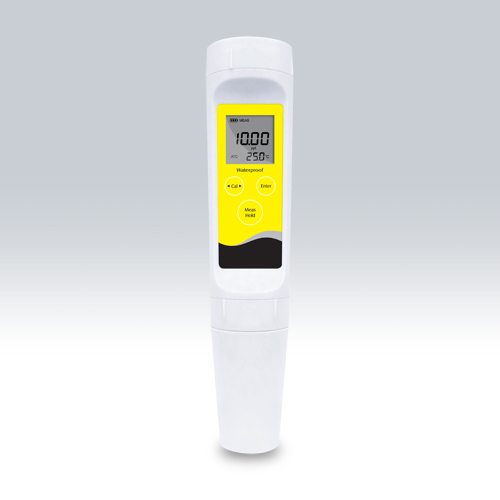Conductivity is defined as the ability of a substance to conduct electrical current and is the opposite of resistance; it is a measure of the property that aqueous solutions possess to conduct electrical current. This property depends on the presence of ions, their concentration, mobility, valence and the temperature of the measurement. The solutions of most inorganic compounds are good conductors. Organic molecules do not dissociate in water, conduct the current on a very low scale.
It is applied in a wide variety of industries. In some cases the nature of the ions is known and used to determine their concentration. For example in the food industry a conductivity meter is used to measure the “salinity” of the samples and is applied in quality control. By contrast, the measurement of conductivity in wastewater, industrial effluents, etc. serves to provide total ionic strength readings. In general, the conductivity measurement is a quick and easy way to determine the ionic strength of a solution. Its main drawback is that it is a non-specific technique.
Knowing the conductivity meter
A complete system for the conductivity measurement consists of the following basic elements:
- Conductivity cell.
- Temperature probe.
- Measure instrument.
The conductivity meter measures the electrical conductivity of the ions in a solution. To do this, apply an electric field between two electrodes and measure the electrical resistance of the solution. To avoid changes in substances, layer effects on the electrodes, etc. an alternating current is applied.
With conventional instruments, the conductivity measurement is obtained by applying a voltage between two electrodes and measuring the resistance of the solution. Solutions with high conductivity produce higher currents. To contain the intensity of the current in a highly conductive solution, it is necessary to decrease the surface of the probe or increase the distance between the poles. For this reason, different probes must be used for different measuring ranges.
The unit of measurement commonly used is the Siemens / cm (S / cm), with a magnitude of 10 raised to -6, i.e microSiemens / cm (µS / cm), or 10 raised to -3, that is, milliSiemens (mS / cm).
In the case of measurements in aqueous solutions, the value of the conductivity is directly proportional to the concentration of dissolved solids, therefore, the higher said concentration, the greater the conductivity.
In addition to normal conductivimeters, there are instruments that automatically convert the conductivity value into ppm, directly offering the measurements of dissolved solids concentration.
The conductivity of a solution is determined by a molecular movement. The temperature influences this movement, so it is necessary to take it into account when making precision measurements. Generally, for comparative measurements, the reference temperature is 20 °C or 25 °C. To correct the effects of temperature, a compensation factor β is used. It is expressed in% / °C which varies according to the composition of the solution being measured. In most applications, the β coefficient is set at 2% / ºC.
In the market there are different types of cells:
- With two electrodes. It is the classic system.
- With four electrodes. It is used in dirty media and with high conductivities.
- By induction. It is used in very high conductivities and highly corrosive media.
The use of one type or another cell is directly linked to the type of conductivity meter that is possessed.
Only the four-ring method can measure different ranges using a single probe. The advantages of this method with respect to the two-pointed method (ammeter method) are numerous: linear readings in a wide range, without any polarization, and without the need for thorough cleaning due to scale.
In Kalstein we offer you new conductivimeters that will allow you to measure different parameters. That’s why we invite you to take a look HERE

